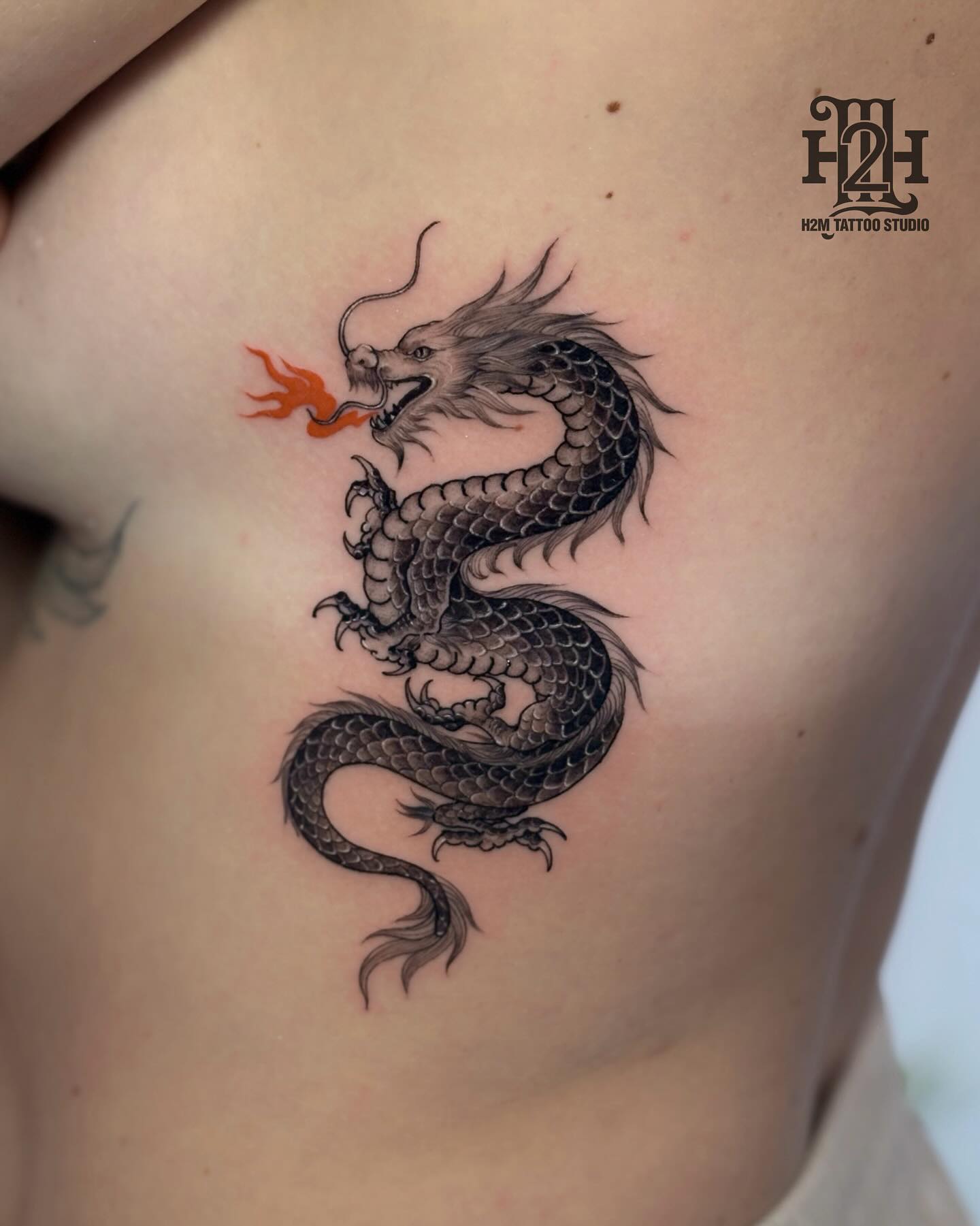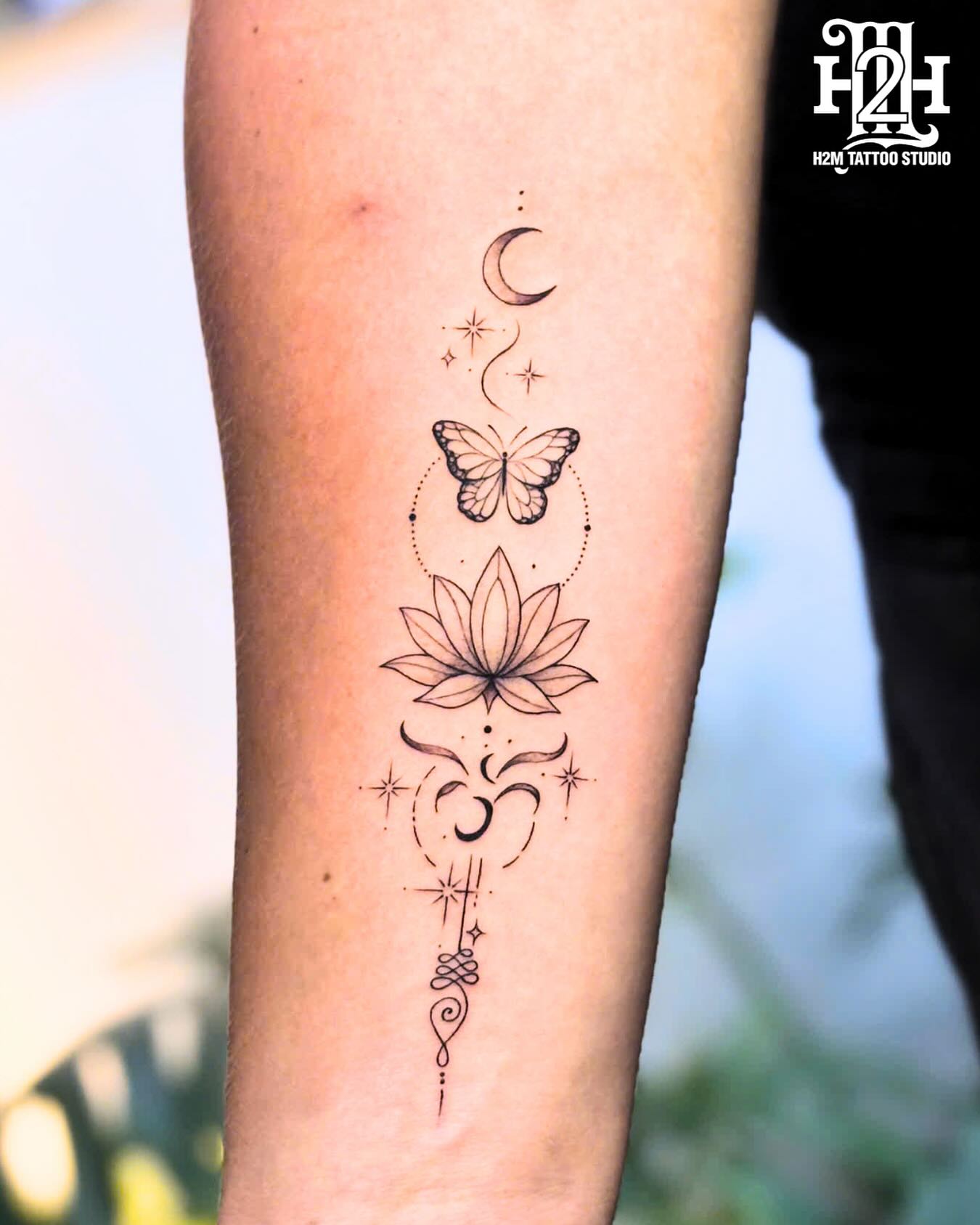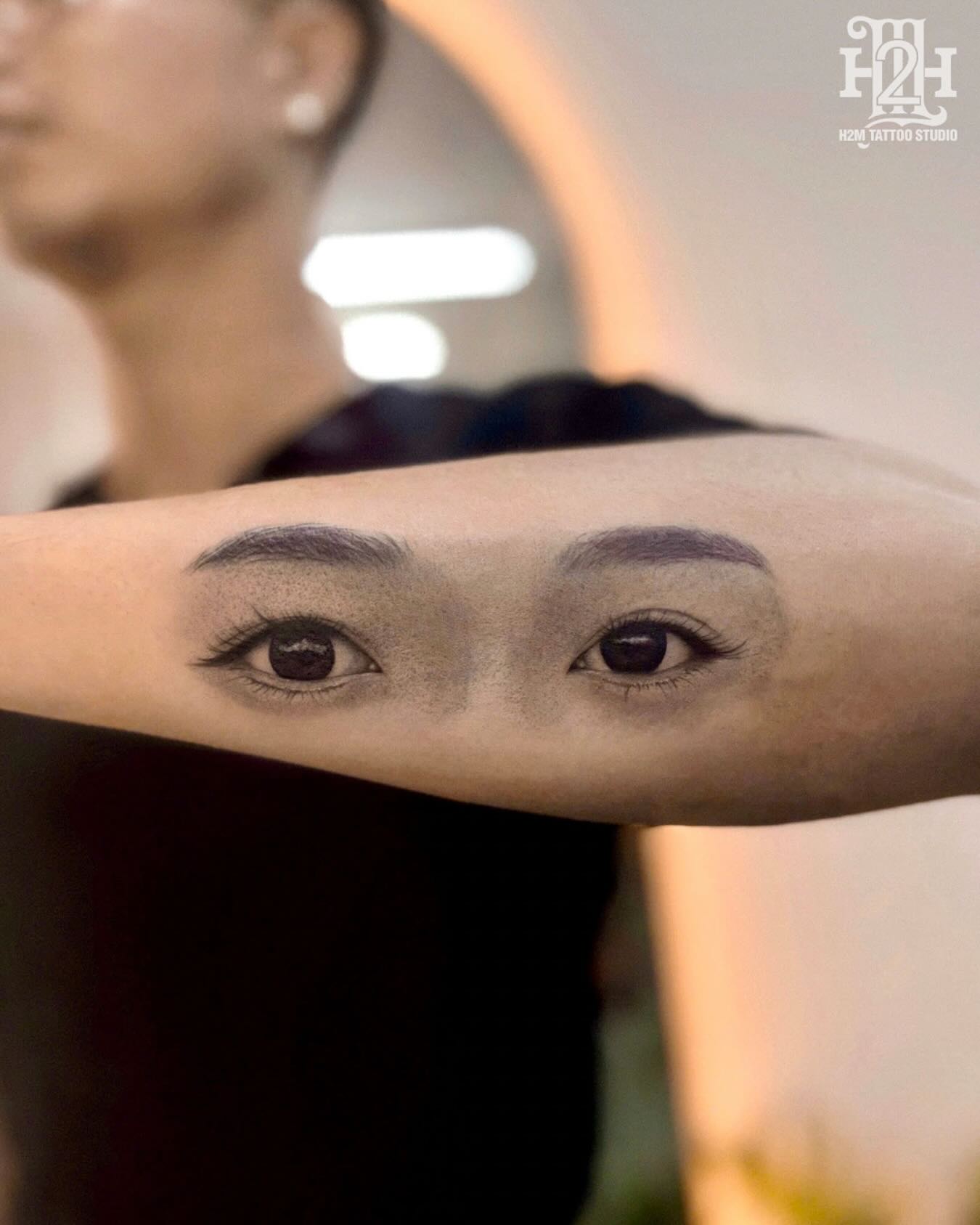What to do if a tattoo gets infected? This critical question strikes fear into the heart of every tattoo enthusiast, but the answer doesn't have to be overwhelming. At H2M Tattoo Studio, we understand that knowing how to respond to infection signs can mean the difference between preserving your artwork and facing serious health complications. This comprehensive guide provides evidence-based answers to help you identify, treat, and prevent tattoo infections, ensuring your investment in body art heals beautifully and safely.
Understanding Tattoo Infections: Causes and Risks
A tattoo infection occurs when harmful bacteria, fungi, or other pathogens enter the skin through the fresh tattoo wound. Since tattooing involves repeatedly puncturing the skin with needles, it creates an open wound that remains vulnerable to infection during the initial healing period.
The most common culprits behind tattoo infections include:
- Staphylococcus aureus - Often found on skin surfaces and can cause severe infections
- Streptococcus - Another common bacterial infection that spreads rapidly
- Pseudomonas - Typically associated with contaminated water or equipment
- Mycobacterium - Less common but more serious, often linked to contaminated ink
Several risk factors can increase your likelihood of developing a tattoo infection. Poor hygiene practices top the list, whether from the tattoo studio, the artist, or your own aftercare routine. The location of your tattoo also matters significantly - areas prone to friction, moisture, or contact with clothing (like feet, hands, or areas that bend frequently) face higher infection risks.
Your individual health status plays a crucial role as well. People with compromised immune systems, diabetes, or certain skin conditions like eczema are more susceptible to infections. Additionally, the size and complexity of the tattoo can influence infection risk, as larger pieces require longer sessions and more extensive healing.
It's important to distinguish between normal healing symptoms and actual infection. During the first few days after getting a tattoo, some redness, mild swelling, and clear fluid discharge are completely normal. The key difference lies in the progression - normal healing symptoms gradually improve, while infection symptoms worsen or persist beyond the expected timeframe.

>>>> READ MORE: Allergic reaction to tattoo ink : 8 Essential Signs, Treatments & Prevention Tips
Recognizing Infection: Symptoms You Should Never Ignore
Identifying a tattoo infection early is crucial for effective treatment and preventing serious complications. While some initial inflammation is normal, certain symptoms serve as clear warning signs that require immediate attention.
Early infection symptoms typically include:
- Increasing redness that spreads beyond the tattoo borders
- Swelling that worsens after the third day
- Warmth or heat radiating from the tattooed area
- Throbbing or pulsating pain (different from normal tattoo soreness)
- Thick, colored discharge (yellow, green, or gray pus)
- Foul odor emanating from the tattoo
- Red streaks extending from the tattoo site
Advanced infection symptoms that require emergency care:
- Fever above 100.4°F (38°C)
- Chills or flu-like symptoms
- Swollen lymph nodes near the tattoo
- Rapid spreading of redness or red streaks
- Severe pain that doesn't respond to over-the-counter pain relievers
- Large areas of skin that feel hot to the touch
- Blistering or skin breakdown around the tattoo
The timeline matters significantly when assessing symptoms. Normal healing follows a predictable pattern: initial redness and swelling peak within 24-48 hours, then gradually subside over the following week. With an infection, symptoms either fail to improve or actively worsen after this initial period.
Different skin types and tattoo locations can affect how symptoms present. People with darker skin tones might notice warmth and swelling before redness becomes apparent. Tattoos on areas with thinner skin, like wrists or ankles, may show symptoms more dramatically than those on thicker-skinned areas like the back or thighs.
Pay special attention to systemic symptoms - fever, chills, fatigue, or nausea - which indicate the infection may be spreading beyond the local tattoo site. These symptoms warrant immediate medical attention, as they suggest the development of cellulitis or even sepsis, both serious medical conditions requiring urgent treatment.
Document your symptoms with photos and notes about timing. This information helps healthcare providers assess the situation more accurately and track the infection's progression. Trust your instincts - if something feels wrong or different from what you expected during normal healing, it's always better to err on the side of caution and seek professional evaluation.
>>>> SEE MORE: Can you donate blood after a tattoo? 10 Essential Facts You Need to Know
Immediate Actions to Take At Home for a Suspected Infection
When you suspect your tattoo might be infected, taking immediate and appropriate action can prevent the situation from worsening while you arrange professional medical care. However, it's crucial to understand that home care is not a substitute for medical treatment - it's a bridge to professional help.
Step 1: Clean Your Hands and the Area
- Wash your hands thoroughly with antibacterial soap
- Gently clean the tattoo with lukewarm water and fragrance-free antibacterial soap
- Pat dry with a clean, disposable paper towel (avoid reusable towels that may harbor bacteria)
Step 2: Apply Appropriate Wound Care
- Apply a thin layer of antibiotic ointment (like Neosporin) if you're not allergic
- Cover with a sterile, non-stick bandage if the tattoo is weeping or in an area prone to contamination
- Change bandages daily or when they become soiled
Step 3: Monitor and Document
- Take clear photos of the infected area for medical reference
- Note the time symptoms started and track their progression
- Record your temperature if you feel feverish
Critical things to AVOID:
- Don't scratch, pick, or rub the infected area
- Avoid using hydrogen peroxide or rubbing alcohol, which can damage healing tissue
- Don't apply ice directly to the skin • Never use home remedies like tea tree oil, salt water, or other unproven treatments
- Don't ignore worsening symptoms or delay seeking medical care
While these immediate steps can provide temporary relief and prevent further contamination, they're not a cure for infection. If symptoms don't show improvement within 24 hours or if they worsen at any point, seek professional medical attention immediately. Remember, infected tattoos can lead to permanent scarring, tattoo distortion, or serious systemic infections if left untreated.

>>>> READ MORE: Can you shower after a new tattoo? 10 Essential Guidelines for Proper Care
When and How to Seek Medical Help
Knowing when to transition from home care to professional medical treatment is crucial for preventing serious complications from an infected tattoo. The timing of your response can significantly impact both your health outcomes and the final appearance of your tattoo.
Seek immediate emergency care if you experience:
- Temperature above 101°F (38.3°C)
- Red streaks extending from the tattoo (signs of blood poisoning)
- Rapid spreading of infection symptoms
- Severe pain unrelieved by over-the-counter medications
- Signs of shock: dizziness, rapid heartbeat, confusion • Extensive blistering or skin death around the tattoo
Schedule urgent care or doctor's visit within 24 hours for:
- Persistent symptoms lasting more than 48 hours
- Worsening redness, swelling, or discharge
- Development of pus or foul odor
- Swollen lymph nodes
- Moderate fever (100.4°F - 101°F)
- Your tattoo showing signs of poor healing beyond normal expectations
When preparing for your medical appointment, gather important information that will help your healthcare provider make an accurate diagnosis. Bring photos showing the progression of symptoms, a list of any medications you're taking, and details about when you got the tattoo and from which studio.
Questions to prepare for your doctor:
- When did you first notice symptoms?
- What aftercare products have you been using?
- Do you have any known allergies to antibiotics or topical treatments?
- Have you had any previous reactions to tattoos or piercings?
- What is your vaccination history, particularly tetanus?
During your visit, the healthcare provider will likely examine the infected area, possibly take a culture sample to identify the specific bacteria causing the infection, and assess your overall health status. Be honest about your symptoms and aftercare practices - this information is crucial for determining the most appropriate treatment plan.
Don't let embarrassment or fear prevent you from seeking timely medical care. Healthcare providers regularly treat tattoo-related complications and are focused on your health, not judging your choices. Early professional intervention almost always leads to better outcomes and can save your tattoo's appearance.
>>>> SEE MORE: what to do after getting a tattoo for Perfect Healing
Medical Treatments for Tattoo Infections
Medical treatment for tattoo infections varies depending on the severity, type of pathogen involved, and the patient's overall health status. Understanding what to expect from professional treatment can help you make informed decisions and follow treatment protocols effectively.
Antibiotic Treatments: Most bacterial tattoo infections respond well to antibiotic therapy. Mild infections may be treated with topical antibiotics like mupirocin or fusidic acid, applied directly to the affected area. More serious infections typically require oral antibiotics such as cephalexin, clindamycin, or amoxicillin-clavulanate. The specific antibiotic choice depends on the suspected or confirmed bacterial strain.
For severe infections or cases involving antibiotic-resistant bacteria, intravenous antibiotics may be necessary. These treatments usually occur in a hospital setting and require careful monitoring. The typical course of antibiotic treatment lasts 7-14 days, and it's crucial to complete the entire prescribed course even if symptoms improve quickly.
Topical Therapies: Healthcare providers may recommend prescription-strength topical treatments beyond basic antibiotic ointments. These might include antimicrobial washes, specialized wound dressings, or combinations of medications tailored to your specific infection type.
Advanced Treatment Options: In cases where the infection has caused significant tissue damage, surgical intervention might be necessary. This could involve drainage of abscesses, removal of dead tissue (debridement), or in extreme cases, surgical excision of severely infected areas. While these procedures can affect the tattoo's final appearance, they're sometimes necessary to prevent life-threatening complications.
Addressing Allergic Reactions: It's important to differentiate between infections and allergic reactions to tattoo ink, which can present similar symptoms. Allergic reactions typically affect specific colors (particularly reds and yellows) and may require treatment with topical or oral corticosteroids rather than antibiotics.
Hospital Care Considerations: Severe infections that show signs of spreading (cellulitis) or systemic involvement may require hospitalization. This allows for intensive antibiotic therapy, close monitoring, and immediate intervention if complications develop. According to medical literature, hospitalization rates for tattoo-related infections remain low but increase significantly when treatment is delayed.
The key to successful medical treatment is early intervention and strict adherence to prescribed therapies. Most patients see improvement within 48-72 hours of starting appropriate antibiotic treatment, though complete healing may take several weeks.

Preventing Tattoo Infections Before They Happen
Prevention remains the most effective strategy against tattoo infections. By making informed choices and following proper protocols, you can significantly reduce your risk of complications and ensure your tattoo heals beautifully.
Choosing the Right Tattoo Studio: Research is your first line of defense. Visit potential studios in person to assess their cleanliness and professionalism. Look for valid health department licenses, autoclave sterilization equipment, and single-use needle policies. The studio should have separate areas for tattooing and non-sterile activities, with proper ventilation and clean surfaces.
Ask about the artist's certification and experience. Reputable artists are happy to discuss their training, safety protocols, and previous work. Red flags include reluctance to show sterilization equipment, reusing ink caps, or working in unclean conditions.
Pre-Tattoo Preparation: Your skin's condition before getting tattooed significantly impacts infection risk. Ensure the area is healthy, without cuts, rashes, or active skin conditions. Avoid sun exposure, which can compromise skin integrity, and maintain good hygiene in the days leading up to your appointment.
Certain medications and health conditions can affect healing and infection risk. Inform your tattoo artist about any medications you're taking, particularly blood thinners or immunosuppressive drugs. People with diabetes, autoimmune conditions, or compromised immune systems should consult their healthcare provider before getting tattooed.
Equipment and Safety Standards: Verify that all equipment is properly sterilized using an autoclave, which uses high-pressure steam to kill bacteria, viruses, and spores. Single-use items like needles, ink caps, and gloves should never be reused. The artist should open sterile packages in front of you and dispose of used materials in appropriate biohazard containers.
Common Myths and Misconceptions: Contrary to some beliefs, newer tattoos aren't automatically safer than those from established shops. What matters is consistent adherence to safety protocols, not the studio's age. Additionally, the misconception that small tattoos carry no infection risk is dangerous - any break in the skin can become infected without proper care.
Price shouldn't be your primary consideration when choosing a tattoo studio. While expensive doesn't always mean better, extremely low prices often indicate compromises in safety, quality, or hygiene standards. Remember that treating an infected tattoo costs far more than investing in a reputable artist initially.
Understanding these prevention principles empowers you to make informed decisions that protect both your health and your investment in quality body art.
What to do if a tattoo gets infected? The answer is clear: act quickly with proper cleaning, monitor symptoms closely, and seek professional medical care when infection signs persist or worsen. At H2M Tattoo Studio, we believe that informed clients make the best decisions for their health and artwork. Remember, most tattoo infections are completely treatable when caught early, and with the knowledge you've gained from this guide, you're now equipped to protect both your investment and your wellbeing. Your beautiful tattoo journey doesn't have to end with infection - it can continue safely with the right care and professional support.
>>>> NOTE NOW:





